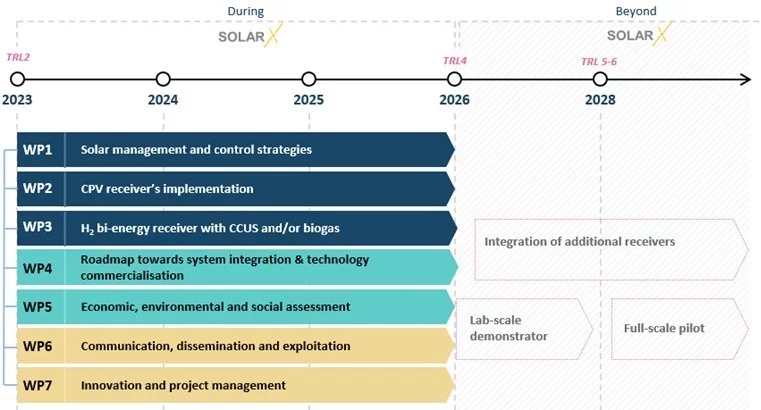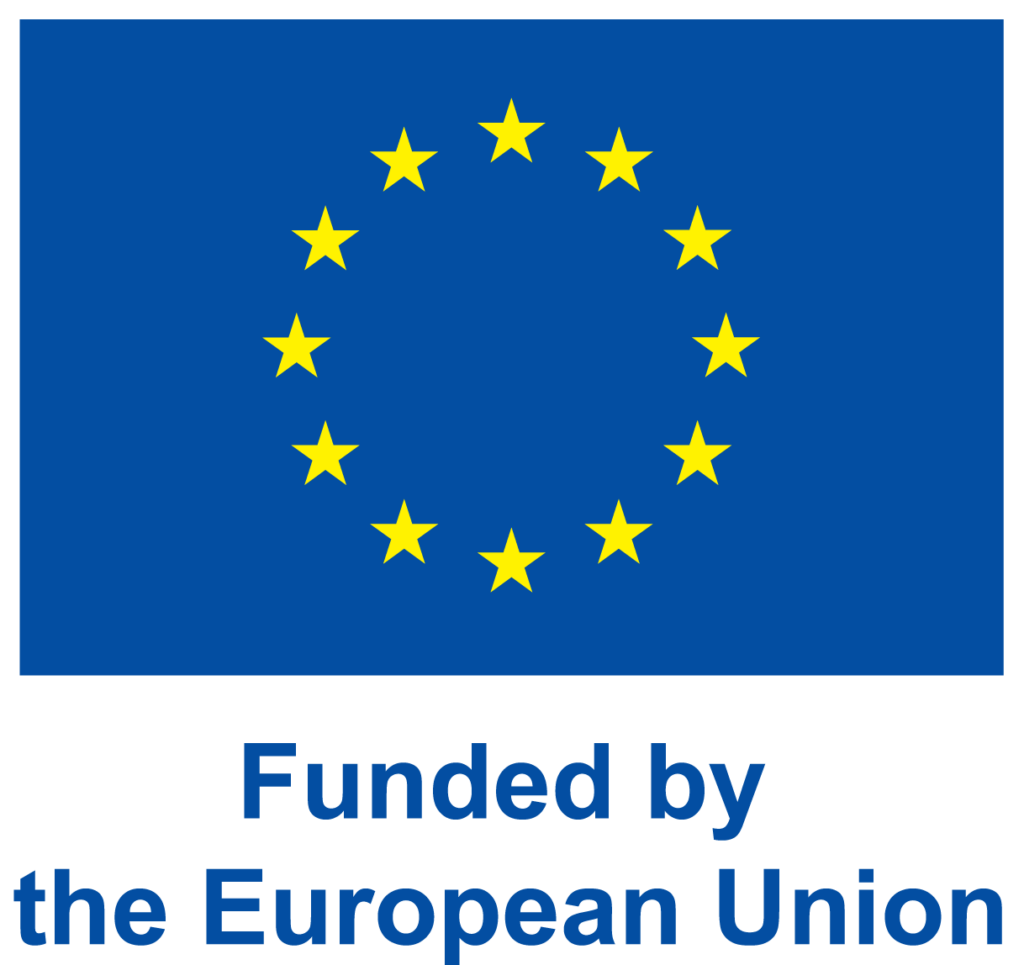SOLARX brings together experts from different fields and countries through seven work packages, with the objective of demonstrating its role as a game-changing renewable energy system in the framework of a future implementation in a carbon-negative energy system. To make it possible, SOLARX is splitted in seven work packages (WP):
- Lead: Fraunhofer Institute for Solar Energy Systems ( Fraunhofer ISE)
- WP1 will create a smart solar resource management system that aligns solar management and energy production with an adaptive and dynamic supply and demand strategy. To achieve this, we will:
- Develop a parametrised optical model of the heliostat field, CST, CPV and H2 receivers
- Set up a DNI now-casting system suited for SOLARX
- Define advanced adaptive aiming strategies for the flux distribution on the three receivers
- Develop and demonstrate in a lab a closed-loop heliostat field control system, based on the HelioControl approach
- Derive a simplified black-box model for optical yield as input to the techno-economic analysis
- Elaborate parametrised thermal, electrical and solar chemical models for the CST, CPV and H2 receivers, respectively.
- Lead: Universitat de Lleida (UDL)
- WP2 will design and develop a high efficiency concentrated Photovoltaic (CPV) receiver. We will:
- Design and model a high efficiency CPV receiver.
- Develop TCVC solar cells.
- Fabricate a self-adaptive cooling plate.
- Design electrical connection of the solar cells and control of the DC/DC converters.
- Integrate these developments into a CPV receiver with 40.7% electrical efficiency.
- Characterise the receivers’ performance
- Lead: National Centre for Scientific Research (CNRS)
- WP3 will develop the SOLARX bi-energy H2 receiver driven by renewable electricity or direct solar energy for the transformation (Dual Methane Reforming) of renewable energy biogas. The main objectives are:
- Revisit the reactor design for integration of solar + electrical heating and biogas operation.
- Design the H2 receiver to integrate an array of reactors with distributed control.
- Experimentally demonstrate a H2 receiver subunit.
- Formulate a system-level model, including CCUS and inlet/outlet gas management
- Lead: EMD International A/S (EMD)
- WP4 will deliver a roadmap towards system integration and technology commercialisation. For this, we will:
- Identify the future technological evolution of the concept.
- Assess economic potential and profitability of SOLARX and perform optimal system sizing.
- Implement SOLARX plant models in techno-economic software (DTU software & EMD software) to enable future solar plant developer to consider SOLARX systems.
- Lead: Technical University of Denmark (DTU)
- WP5 will analyse the entire system from a global point of view including environmental, economic, and social aspects. The analysis will guide technical choices and developments during the project.The specific objectives that WP5 achieves are:
- Economic assessment of SOLARX in electricity and H2
- LCA assessment of SOLARX for specific project scenarios.
- Map of primary and secondary stakeholders for SOLARX.
- Social impact analysis of SOLARX via survey questionnaires and interviews.
- Lead: accelopment Schweiz AG (accelCH)
- WP6 will ensure the use and wide acceptance of SOLARX results, WP6 will:
- Achieve the widest possible outreach through project and technology specific communication activities.
- Plan and implement dissemination measures to spread the SOLARX
- Develop exploitation mechanisms to facilitate future commercial and non-commercial use of results.
- Develop an IP strategy and monitor its implementation and contribute to standards and norms.
- Lead: Universitat de Lleida (UDL)
- WP7 will ensure the timely and effective management of the SOLARX project. Overall objective of WP7 is to support the completion of scientific objectives defined in the Grant Agreement by:
- Ensuring the proper financial and scientific monitoring of the project.
- Ensuring coordination and communication between partners and with the European Commission.
- Control the quality and results of the project and manage inherent risk.
- Deliver appropriate Innovation Management.

Deliverables
Project Website including sections for stakeholders
This deliverable summarises the creation of the SOLARX website and plans for further maintenance, updates and expansion of the website over the course of the project.
Design and model of CPV receiver
This deliverable gives the specifications of each individual component of a high efficiency dense array CPV receiver and the goals in terms of electrical outputs characteristics.
Strategic Roadmap
This report describes the actions and measures taken to ensure the full conformance of the project with the contractual requirements, issued in accordance to the ISO-9001 standard
Preliminary Project Management Plan
This deliverable includes a Gantt chart and a Work Breakdown Structure. It details a schedule per task, responsible partner related subtasks, related deliverables, and dependencies on other tasks.
